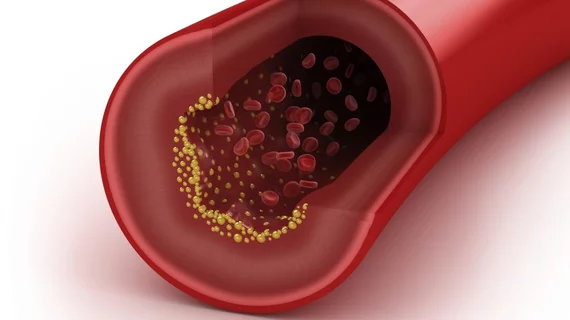Whole-body MR angiography can identify early atherosclerosis at a population level
Whole-body MR angiography (MRA) is an effective screening tool for identifying early atherosclerosis in patients at low to intermediate risk for cardiovascular disease, according to a new study published by Radiology.
Why whole-body MRA? Study co-author Graeme Houston, MD, from the University of Dundee in Dundee, Scotland, explained the technique’s appeal in a prepared statement.
“The key advantages of this MRA technique include the ‘whole-body’ approach, which detects systemic disease that would be missed by modalities assessing single vascular sites,” Houston said. “The results offer a validated quantitative score of atherosclerotic burden, and the technique does not use ionizing radiation, which is an advantage over CT angiography.”
The authors tested the effectiveness as whole-body MRA by screening more than 1,500 patients at a low to intermediate risk for cardiovascular disease for asymptomatic atherosclerosis from June 2008 to February 2013. The average patient age was 53.5 years old.
Overall, more than 49 percent of all participants had at least one stenotic vessel. Twenty-seven percent of participants had multiple stenotic vessels. Whole-body MRA allowed the researchers to interpret more than 99 percent of all potentially analyzable segments.
“This is surprising, given that the study group was made up of asymptomatic individuals without diabetes who had low to intermediate risk of future cardiovascular events by standard risk factor assessment,” Houston said in the same statement.
Houston added that the findings “confirm the feasibility for MRA as an imaging method for detecting early atherosclerotic disease in individuals at low to intermediate risk of cardiovascular events.”
What’s next for the researchers? They’re planning follow-up studies to see how whole-body MRA impacts a patient’s long-term health.

